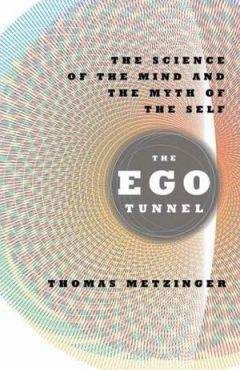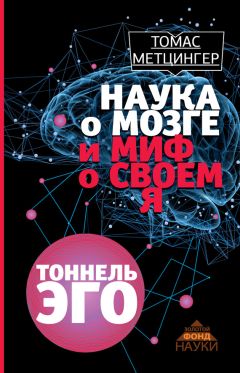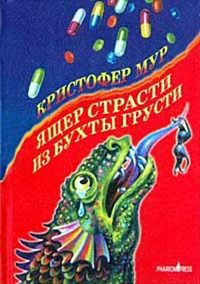41. V. S. Ramachandran, «Consciousness and Body Image: Lessons from Phantom Limbs, Capgras Syndrome and Pain Asymbolia,» Phil. Trans. Roy. Soc. Lond. B353:1851-9 (1998). For clinical and experimental details, see Ramachandran and Rogers-Ramachandran, «Synaesthesia in Phantom Limbs» (1996).
42. P. Brugger et al., «Beyond Re-membering: Phantom Sensations of Congenitally Absent Limbs,» Proc. Nat. Acad. Sci. USA 97:6167-72 (2000).
43. See § 12 and § 13 of The Ethics.
CHAPTER 4
1. Adapted from the case report of a sixty-eight-year-old woman suffering from stroke-related, transient alien hand syndrome. From D. H. Geschwind et al., «Alien Hand Syndrome: Interhemispheric Disconnection Due to Lesion in the Midbody of the Corpus Callosum,» Neurology 45:802–808 (1995).
2. See K. Goldstein, «Zur Lehre der Motorischen Apraxie,» Jour. fur Psychologie und Neurologie 11:169–187 (1908); W. H. Sweet, «Seeping Intracranial Aneurysm Simulating Neoplasm,» Arch. Neurology & Psychiatry 45:86-104 (1941); S. Brion & C.-P. Jedynak, «Troubles du Transfert Interhemispherique (Callosal Disconnection). A Propos de Trois Observations de Tumeurs du Corps Calleux. Le Signe de la Main Etrangere,» Revue Neurologique 126:257–266 (1972); G. Goldberg et al., «Medial Frontal Cortex Infarction and the Alien Hand Sign,» Arch. Neurology 38:683–686 (1981). For an important new conceptual distinction, see C. Marchetti & S. Della Sala, «Disentangling the Alien and the Anarchic Hand,» Cog. Neuropsychiatry 3:191–207 (1998).
3. Goldberg et al., «Medial Frontal Cortex Infarction,» 684 (1981).
4. G. Banks et al., «The Alien Hand Syndrome: Clinical and Postmortem Findings,» Arch. Neurology46:456–459 (1989).
5. Ibid.
6. For more on the representational architecture of volition and akinetic mutism, see T. Metzinger, «Conscious Volition and Mental Representation: Towards a More Fine-Grained Analysis,» in Natalie Sebanz & Wolfgang Prinz, eds., Disorders of Volition (Cambridge, MA: MIT Press, 2006).
7. S. Kremer et al., Letter to the Editor, «The Cingulate Hidden Hand,»
Jour. Neurology, Neurosurgery, and Psychiatry 70:264–265 (2001); see also a classical study by I. Fried et al., «Functional Organization of Human Supplementary Motor Cortex Studied by Electrical Stimulation,» Jour. Neurosci. 11:3656-66 (1991). In this study, subjects stimulated with electrical currents of different strength reported the illusory conscious perception of ongoing movement, or the anticipation of movement, or the «urge» to perform a movement, all «in the absence of overt motor activity.»
8. D. M. Wegner & T. Wheatley, «Apparent Mental Causation: Sources of the Experience of Will,» Amer. Psychol. 54(7):480–492 (1999).
9. Wegner & Wheatley, «Apparent Mental Causation» (1999), 488.
10. Ibid., 483.
11. See, for instance, P. Haggard, «Conscious Awareness of Intention and of Action,» in Johannes Rossler & Naomi Eilan, eds., Agency and Self-Awareness-Issues in Philosophy and Psychology (Oxford, UK: Clarendon Press, 2003). A good recent review is Patrick Haggard, «Human Volition: Towards a Neuroscience of Will,» Nat. Rev. Neurosci. 9:934–946 (2008).
12. It is true that indeterminacy exists on the subatomic level, but the mind cannot somehow sneak into the physical world through indeterminate quantum processes. (Nor is chance what we want: Philosophically, randomness in the brain would be just as bad as full determination.) Quantum theories of free will are empirically false as well: There may be different kinds of brains somewhere else in the universe, but in human brains the firing of neurons and so on take place on the macroscopic scale. For such huge objects as nerve cells at 37°C body temperature, quantum events simply play no role.
13. The voluntary inhibition of voluntary actions seems to be mostly determined by unconscious events in the anterior median cortex. See M. Brass & P. Haggard, «To Do or Not To Do: The Neural Signature of SelfControl,» J. Neurosci. 27:9141–9145. (2007).
14. See T. Metzinger, «The Forbidden Fruit Intuition,» The Edge Annual Question-2006: What Is Your Dangerous Idea? www.edge.org/q2006/ q06_7.htmlfflmetzinger. Reprinted in J. Brockman, ed., What Is Your Dangerous Idea? Todays's Leading Thinkers on the Unthinkable (New York: HarperPerennial, 2007), 153–155.
15. It would not be a new thought in the history of philosophy. Vasubandhu, a fourth-century Buddhist teacher and one of the most important figures in the development of Mahayana Buddhism in India, reports: Buddha has spoken thus: 'O, Brethren! actions do exist, and also their consequences (merit and demerit), but the person that acts does not. There is no one to cast away this set of elements and no one to assume a new set of them. (There exists no individual), it is only a conventional name given to (a set) of elements.' Appendix to the VIIIth chapter of Vasubandhu's Abhidarmakoga, § 9: 100.b.7; quoted after T. Stcherbatsky, «Th Soul Thory of the Buddhists,» Bull. Acad. Sci. Russ. 845 (1919).
CHAPTER 5
1. The second question, of course, is the one Descartes asked in the first Meditation, when he realized that everything he had ever believed to be certain-including his impression of sitting by the fire in his winter coat and closely inspecting the piece of paper in his hands-could equally well have occurred in a dream. What makes the problem of dream skepticism so intractable is that even in a «best-case scenario» of sensory perception, there is apparently no reliable, fool-proof method of distinguishing wakefulness and dreaming. According to dream skepticism, literally all of our experiences of waking life could be nothing more than a dream, and we are unable, even in principle, ever to decide this question with certainty. For a detailed discussion of the problem of dream skepticism, see, for instance, Barry Stroud, The Significance of Philosophical Scepticism (New York: Oxford University Press, 1984). For the status of the phenomenal and the epistemic subject in the dream state, see J. Windt & T. Metzinger, «The Philosophy of Dreaming and Self-Consciousness: What Happens to the Experiential Subject During the Dream State?» in Patrick McNamara & Deirdre Barrett, eds., The New Science of Dreaming (Westport, CT: Praeger, 2007). See http://eprints.assc.caltech.edu/200/01/Dreams.pdf.
2. See J. A. Hobson et al., «Dreaming and the Brain: Toward a Cognitive Neuroscience of Conscious States,» Behavioral and Brain Sci. 23:793–842 (2000); and Antti Revonsuo, Inner Presence: Consciousness as a Biological Phenomenon (Cambridge, MA: MIT Press, 2006).
3. Helen Keller, The World I Live In (New York: New York Review Books, 2003).
4. H. Bertolo et al., «Visual Dream Content, Graphical Representation and EEG Alpha Activity in Congenitally Blind Subjects,» Cog. Brain Res. 15:277 284 (2003).
5. See C. H. Schenck, «Violent Moving Nightmares,» www.parasomniasrbd.com/; E. J. Olson et al., «Rapid Eye Movement Sleep Behaviour Disorder: Demographic, Clinical, and Laboratory Findings in 93 Cases,» Brain 123:331339 (2000); and C. H. Adler & M. J. Thorpy, «Sleep Issues in Parkinson's Disease,» Neurology 64 (suppl. 3):12–20 (2005).
6. See Hobson et al., «Dreaming and the Brain» (2000) for details.
7. F. van Eeden, «A Study of Dreams,» Proc. Soc. Psychical Res. 26:431–461 (1913).
8. Oliver Fox, Astral Projection (New Hyde Park, NY: University Books, 1962). Also quoted in S. LaBerge & J. Gackenbach, «Lucid Dreaming,» in Etzel Cardena et al., eds., Varieties of Anomalous Experience: Examining the Scientific Evidence (Washington, DC: American Psychological Association, 2000).
9. See Paul Tholey, Schopferisch traumen (Niedernhausen, Ger.: Falken Verlag, 1987).
10. See Stephen LaBerge & Howard Rheingold, Exploring the World of Lucid Dreaming (New York: Ballantine, 1990).
11. S. LaBerge et al., «Lucid Dreaming Verified by Volitional Communication During REM Sleep,» Perceptual and Motor Skills 52:727–732 (1981); and S. LaBerge et al., «Psychophysiological Correlates of the Initiation of Lucid Dreaming,» Sleep Res. 10:149 (1981).
12. For details, see P. Garfield, «Psychological Concomitants of the Lucid Dream State,» Sleep Res. 4:183 (1975); S. LaBerge, «Induction of Lucid Dreams,» Sleep Res. 9:138 (1980); S. LaBerge, «Lucid Dreaming as a Learnable Skill: A Case Study,» Perceptual and Motor Skills 51:1039-41 (1980); LaBerge & Rheingold, Exploring the World of Lucid Dreaming (1990); and G. S. Sparrow, «Effects of Meditation on Dreams,» Sundance Comm. Dream Jour. 1:48–49 (1976).
13. Hobson et al., «Dreaming and the Brain» (2000), 837. For details on the relation between the DLPFC and reflective thought, see A. Muzur et al., «The Prefrontal Cortex in Sleep,» Trends Cog. Sci. 6:475–481 (2002).
14. Tholey, Schopferisch traumen (1987), 97. English translation by T. Metzinger.
15. «Spandrels» refers to Stephen Jay Gould and Richard C. Lewontin's 1979 essay «The Spandrels of San Marco and the Panglossian Paradigm,» in which, using the architectural analogy, the authors argue that some biological features are exaptations: that is, currently used for something other than what they were «developed for» during natural selection. Proc. Royal Soc. London, Ser. B, Biol. Sci. (1934–1990) 205(1161):581–598 (September 21, 1979).
CHAPTER 6
1. For details, see G. Rizzolatti et al., «From Mirror Neurons to Imitation: Facts and Speculations,» in Andrew N. Meltzoff & Wolfgang Prinz, eds., The Imitative Mind: Development, Evolution, and Brain Bases (Cambridge: Cambridge University Press, 2002); and G. Rizzolatti & M. Gentilucci, «Motor and Visual-Motor Functions of the Premotor Cortex,» in Pasko Rakic & Wolf Singer, eds., Neurobiology of Neocortex (New York: John Wiley & Sons, 1988). An excellent recent overview is Giacomo Rizzolatti & Corrado Sinigaglia, Mirrors in the Brain: How Our Minds Share Actions and Emotions (Oxford: Oxford University Press, 2008).
2. The mirror-neuron system may occasionally go awry. Patients suffering from a rare but well-known neurological syndrome called echopraxia are inevitably forced to act out any behavior they observe in other human beings. What likely happens in these patients is that the mirror-neuron system is inadvertently coupled to the motor system because of lack of prefrontal inhibition. Your mirror neurons come online and lose their ordinary status as purely offline simulators. Therefore, you are literally driven by the actions you see other people performing.
3. See V. Gallese & A. Goldman, «Mirror Neurons and the Simulation Theory of Mind-Reading,» Trends Cog. Sci. 2:493–501 (1998); M. Iacoboni et al., «Cortical Mechanisms of Imitation,» Science 268:2526-8 (1999); and V. Gallese, «The 'Shared Manifold' Hypothesis: From Mirror Neurons to Empathy,» Jour. Consciousness Studies 8:33–50 (2001).
4. See T. Metzinger & V. Gallese, «The Emergence of a Shared Action Ontology: Building Blocks for a Theory,» in G. Knoblich et al., eds., Self and Action. Special issue of Consciousness & Cognition 12(4):549–571 (2003).
5. V. Gallese, «Intentional Attunement: A Neurophysiological Perspective on Social Cognition and Its Disruption in Autism,» Brain Res. 1079:15–24 (2006); F. de Vignemont & T. Singer, «The Empathic Brain: How, When, and Why?» Trends Cog. Sci. 10:435–441 (2006).
6. L. Carr et al., «Neural Mechanisms of Empathy in Humans: A Relay from Neural Systems for Imitation to Limbic Areas,» Proc. Nat. Acad. Sci. USA 100(9):5497–5502 (2003); see also A. Goldman & C. S. Sripada, «Simulationist Models of Face-Based Emotion Recognition,» Cognition
94:193–213 (2005).
7. A. D. Lawrence et al., «Selective Disruption of the Recognition of Facial Expressions of Anger,» NeuroReport 13(6):881–884 (2002).
8. I. Morrison et al., «Vicarious Responses to Pain in Anterior Cingulate Cortex: Is Empathy a Multisensory Issue?» Cog. Affec. & Behav. Neuroscience 4:270–278 (2004); P. L. Jackson et al., «How Do We Perceive the Pain of Others: A Window into the Neural Processes Involved in Empathy,» NeuroImage 24:771–779 (2005); M. Botvinick et al., «Viewing Facial Expressions of Pain Engages Cortical Areas Involved in the Direct Experience of Pain,» NeuroImage 25:315–319 (2005).
9. This was the step from what I call second-order embodiment to thirdorder embodiment. In order to counteract the semantic inflation of the term «embodiment,» I have introduced the notions of «first-order embodiment» (the bottom-up self-organization of intelligent behavior avoiding explicit computation and relying only on physical properties of the system), «secondorder embodiment» (generating intelligent behavior by using an integrated representation of the body as a whole, by internally representing oneself as embodied), and «third-order embodiment» (the functional elevation of second-order embodiment to the level of global availability, i.e., the conscious experience of embodiment). A short summary can be found in Scholarpedia 2 (10):4174 (2007) at www.scholarpedia.org/ article/Self_Models.
10. V. Gallese, «Embodied Simulation: From Neurons to Phenomenal Experience,» Phen. Cog. Sci. 4:23–38 (2005).
11. Gallese calls this specific phenomenal state «intentional attunement» — the peculiar experiential quality of familiarity with other individuals that arises because we implicitly match their intentions with processes that go on in our own brain when we form such intentions.
12. See T. Metzinger, «Self Models,» Scholarpedia 2(10):4174 (2007) at www.scholarpedia.org/article/Self_Models; and Metzinger, «Empirical Perspectives from the Self-Model Theory of Subjectivity,» Progress in Brain Res. 168:215–246 (2008).




